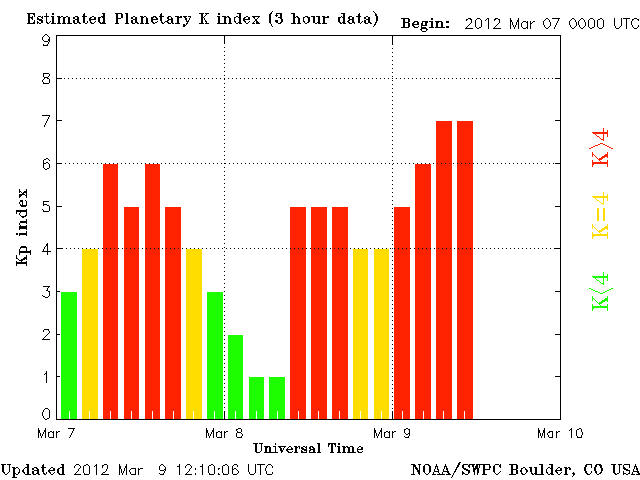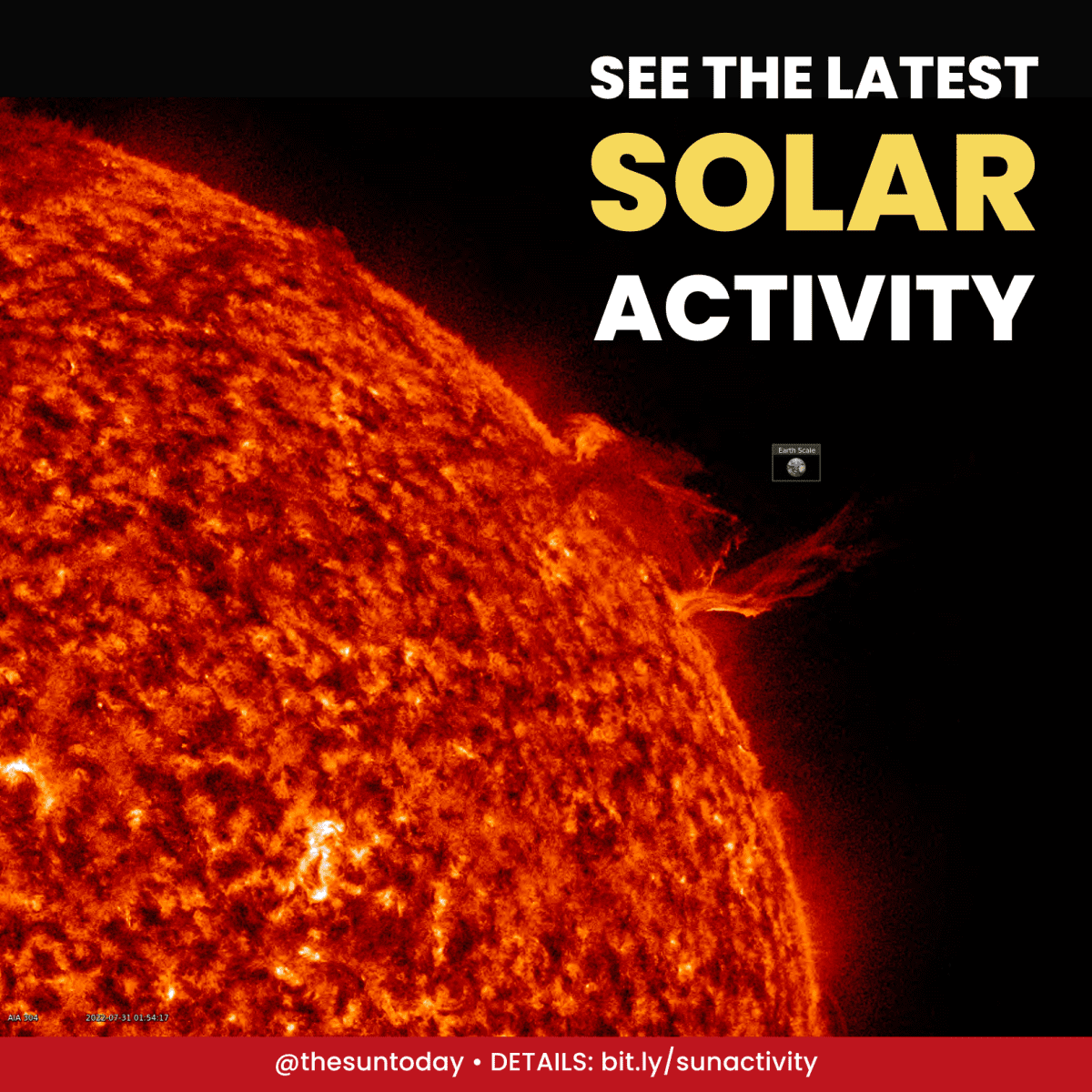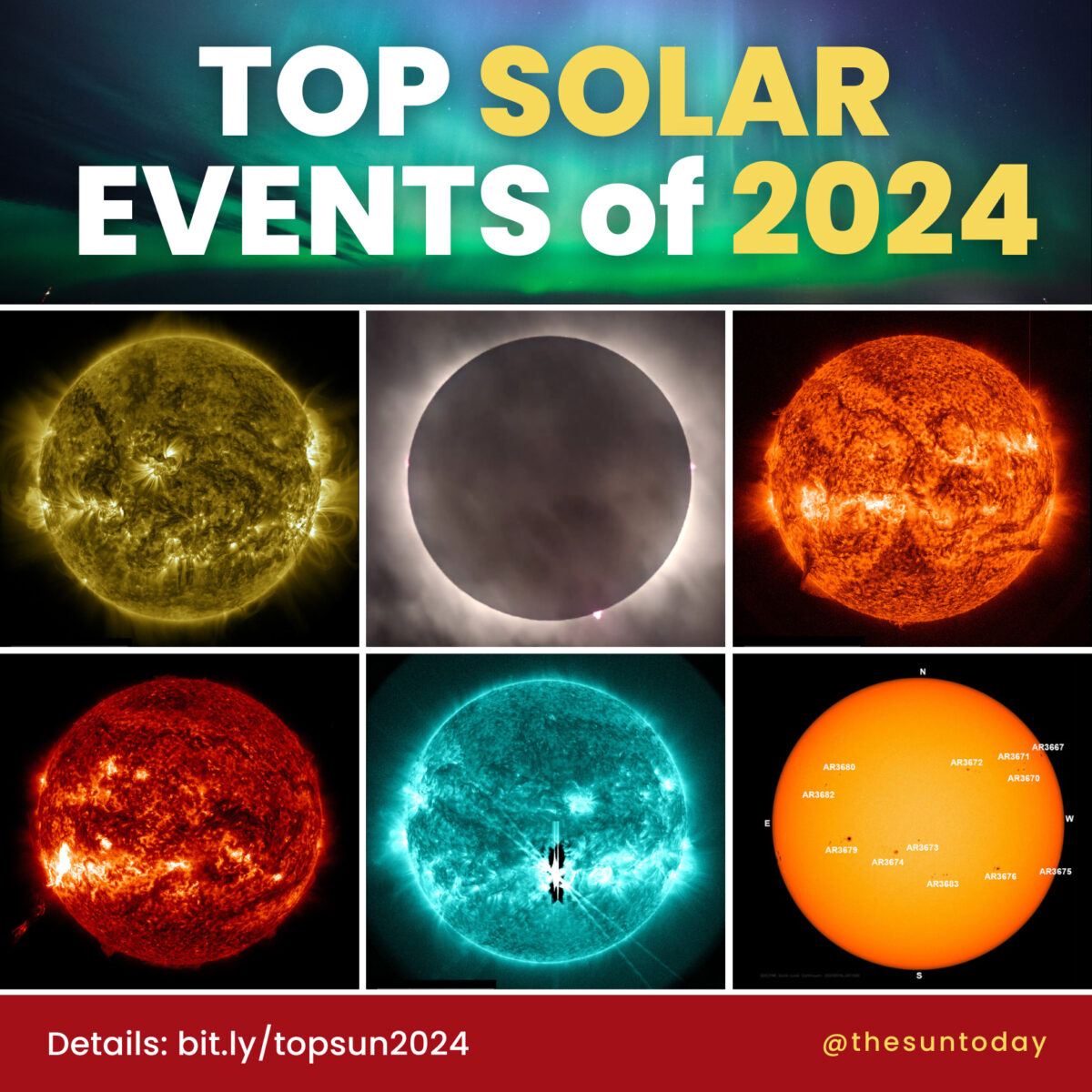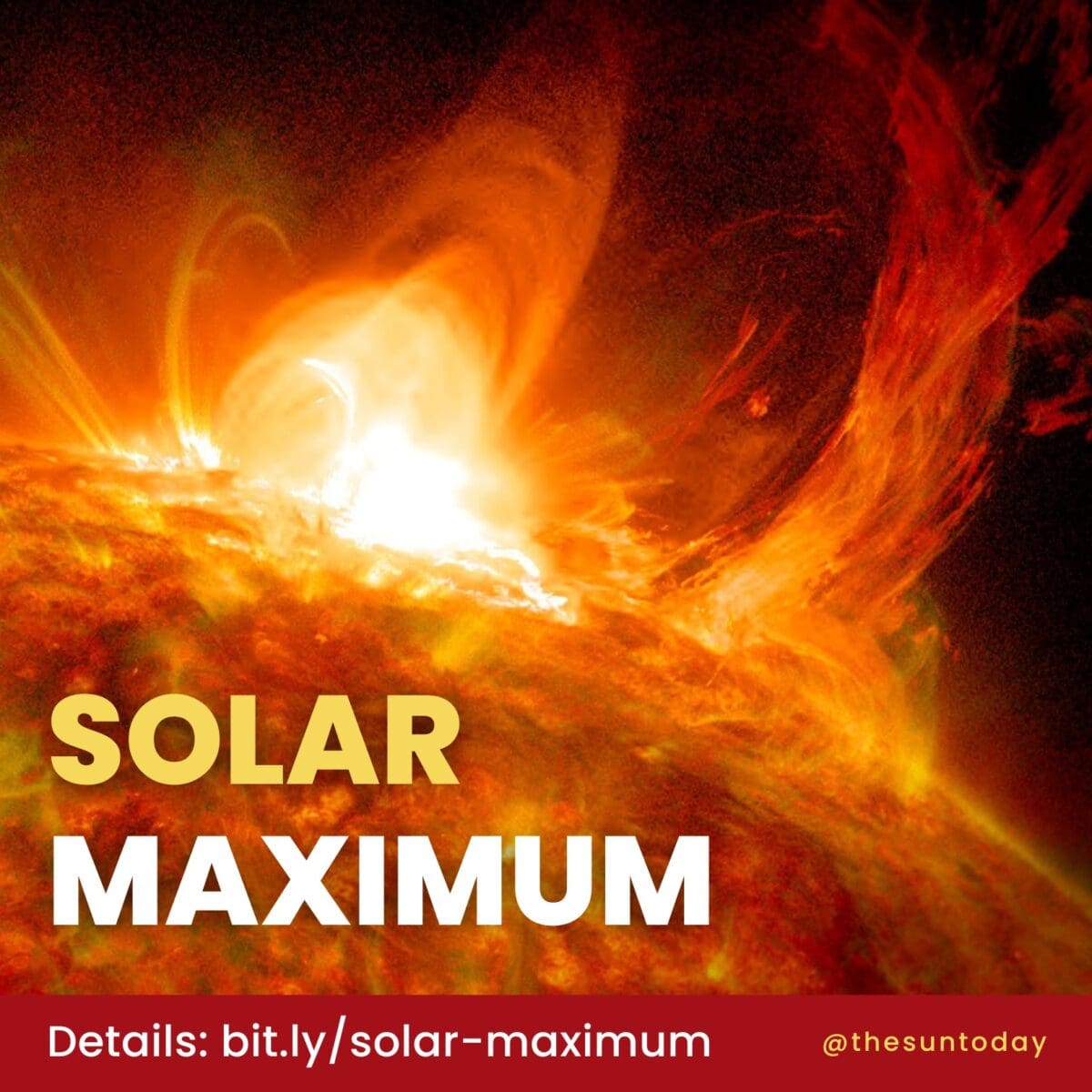
Nature never ceases to surprise and amaze. Just when it looked like the geomagnetic storm from yesterdays CME impacts had fizzled out, Earth’s magnetosphere continues its upset state. Even before the Kp index (a measure of the disturbed state of Earth’s magnetic field) reached its current value amazing aurora were seen in northern latitudes.

Aurora photograph from Faskrudsfjordur, Iceland taken by Jónína Óskarsdóttir. "No words can describe the experience of the Northern Lights show tonight," says photographer Jónína Óskarsdóttir. "This is just a 1s exposure!" credit: Jónína Óskarsdóttir and spaceweather.com
Since then the Kp went from 5 with geomagnetic storm level of G1 down to Kp 4 back up to 5, 6 then 7.
The geomagnetic storm level is now G3. So according to NOAA’s scale for geomagnetic activity it could have several consequences on or near Earth-
“Power systems: voltage corrections may be required, false alarms triggered on some protection devices.
Spacecraft operations: surface charging may occur on satellite components, drag may increase on low-Earth-orbit satellites, and corrections may be needed for orientation problems.
Other systems: intermittent satellite navigation and low-frequency radio navigation problems may occur, HF radio may be intermittent, and aurora has been seen as low as Illinois and Oregon (typically 50° geomagnetic lat.).”
Aurora watchers at higher latitudes such as the northern US should keep their eyes out in the early morning and maybe even into tonight depending upon how this storm progresses. Here is an image of NOAA’s Ovation auroral oval prediction showing the estimated extend of the current storm’s aurora.

And just to make things more interesting the culprit of all this activity, sunspot group AR11429, produced an M6.3 solar flare around 10:30 PM EST.

An M6.3 solar flare from AR11429 recorded by the GOES X-ray monitor. The yellow arrow denotes the start of the flare.
The flare produced a temporary radio blackout as well as a possible Earth directed CME. We will have to wait and see. The sunspot group still shows potential for more activity as the region sits near the central meridian of the Sun. Facing directly at Earth this is a prime location to produce more geo-effective solar activity.
Here is a look at the flare captured by the 131 Angstrom wavelength camera on the Solar Dynamics Observatory (SDO). This shows us the super hot 5-10 million degree plasma produced by the solar flare.
There is surely more to come! Stay tuned!





